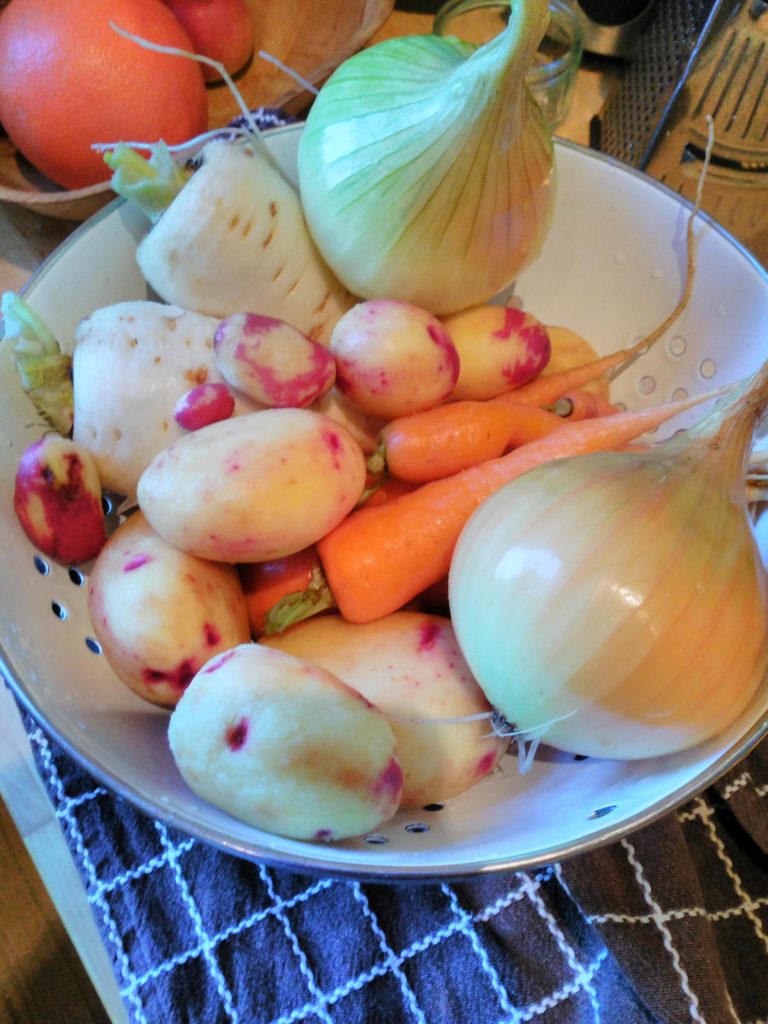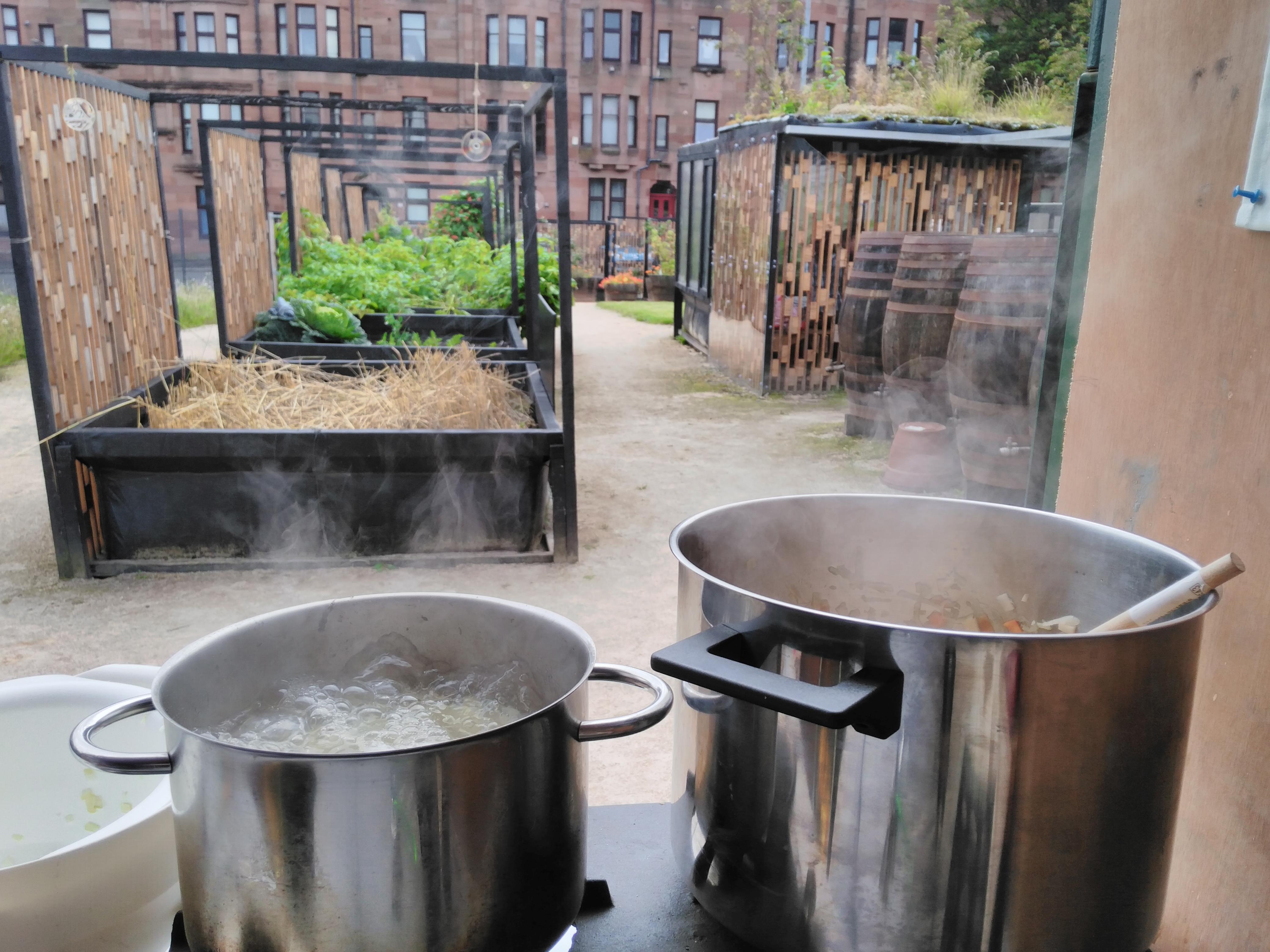This recipe is part of our Pledge series, encouraging folk to eat more Scottish produce. It can mean fresher food that’s better for you, the environment, and your wallet. Check out the Pledge here. Have you made yours yet?
[adapted from an article by the kitchn]
ANY Vegetable?
Yep, nearly any vegetable will make tasty soup. Some of our favourite veggies to use up include carrots, parsnips, kale, cabbage, mushrooms, potatoes and cauliflower – almost anything will do. It’s why it’s so great for seasonal eating.
Whilst you can make soup from almost anything, you can’t completely get rid of the taste of a vegetable in soup, so we wouldn’t recommend putting in something in that you really don’t like.
Also, nearly any texture of vegetable will work, from tender greens to hard squash, but the cooking time will change. A big pot of kale or other greens will cook down quickly, but root vegetables and squash will need more time – so keep an eye on your soup if you’re using a lot of greens.
What Else Do You Need?
The essentials are vegetables and stock, plus oil or butter and some salt and pepper.
After that, it’s all optional. Traditionally you’d add some aromatics — onion, garlic, or leeks — and you can add some fresh herbs if you have some to hand. You can flavour the vegetables with spices, like curry or chilli powder, or some paprika – whatever you’ve got around.
After the soup is finished you can add lots of bits to make it more exciting – a can of chopped tomatoes, a can of butter beans or chickpeas, a sprinkle of cheese or a dollop of yogurt.
Don’t I need a Blender?
Nope! You can make a chunky soup, or you can grate your vegetables and they’ll cook down to a mush (sounds appetising, I know!), as you go.
How To Make Soup from Any Vegetable
What You Need
Ingredients
500g – 1kg vegetables (can be anything you like)
Aromatics, such as onion, garlic, or leeks
Oil or butter , around a tablespoon
Salt and pepper
1 – 1.5l stock (can be chicken or vegetable, fresh or made from stock cubes – typically 2-3 cubes)
Equipment
Cutting board
Knife
Large Pot with a lid (it’ll stop moisture evaporating, and save you on your gas bills)
Wooden spoon
Instructions
1. Choose and weigh your vegetables: Most of us have a few things rattling round the kitchen or fridge that need using up, or have seen better days – these are great for soup! Choose the ones that need to be used up the soonest, and keep adding to your vegetables until you’ve got between 500g – 1kg. If you don’t have scales, then most supermarket vegetables will have a weight on the packaging. It doesn’t need to be precise.
2. Cut up the vegetables and aromatics: Try for evenly sized chunks of vegetable – this way they’ll cook at the same rate. The kitchn recommend around 1″ square, but don’t worry too much – if things don’t cook at the same rate, you can always keep cooking until it’s done. If you’re grating your vegetables, your soup will be ready sooner, as the bits will cook more quickly. If you’re using onions, we’d use one large onion, and you can switch that for leeks if you’ve got those instead.
3. Heat oil: Heat around 1 tablespoon of oil or butter in your pot, over a medium heat.
4. Fry aromatics: If using, add leeks/onions/garlic to the oil, letting them cook gently for about 5 minutes – you want them to be soft, and onions should be slightly transparent. If in doubt, give them a taste – if they’re not cooked enough to eat, let them fry for a little longer.
5. Brown the vegetables: Add your vegetables and continue to cook for several minutes. The vegetables should soften slightly and brown a little bit around the edges.
6. Season the vegetables: Most vegetables could do with a bit of salt and pepper, and if you are adding any other seasonings such as spices or dried herbs, add them now so they flavor the soup from the beginning. If you’re going for something spicy, start with a teaspoon of spice, and if you’re going for something flavourful then try adding a couple of teaspoons.
7. Add stock: Add 1-1.5l of stock and bring to a simmer. If you’re adding fresh herbs, lentils, rice or any other pulses, now is the time to do it!
8. Cover and simmer: Turn the heat down to low and cover the pot. Let your soup cook for about 30 minutes, then check and taste. Are the vegetables as soft as you would like? If you want chunky soup, take the soup off the heat when the vegetables are cooked. If you want the vegetables very soft for blending, keep cooking until they are falling apart.
9. Taste and season: Make sure to taste the soup as it finishes cooking. If it seems flat, you could add some lemon juice. If it is too salty, thin it out with some extra water or millk/cream.
10. Blend if desired: Once the vegetables are very soft, you can blend the soup if you like.
11. CELEBRATE! You made soup! This should be enough for a family meal, or 4-6 portions for fairly hungry people.
Storage: The soup should keep in the fridge for up to 5 days, or you could freeze for up to 3 months.
Handy hint: if you don’t have enough tubs to freeze soup in, put it in food bags propped up inside a tub – once frozen, the soup will hold it’s shape, and you can use the tubs for other things.



